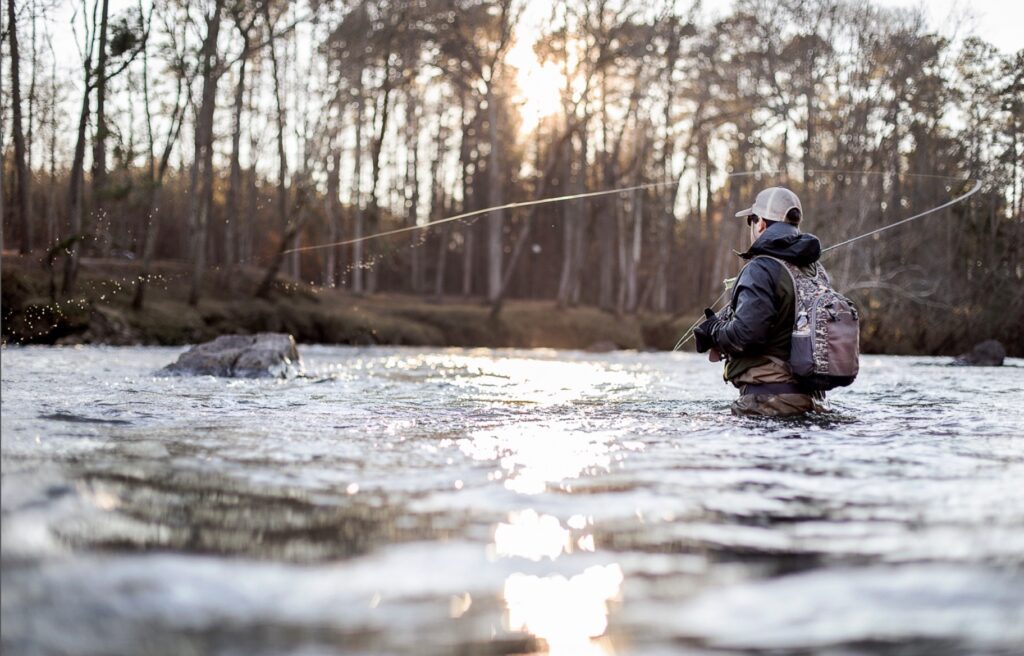Fly fishing is an art that requires patience, skill, and dedication. When it comes to trout fishing, achieving a natural drift is essential. The drift refers to how your fly moves through the water, and mending is a key skill to master if you want to consistently catch trout. Below are four tips to help you achieve a drag-free drift.
What Is Mending and Why Is It Important?
Mending your fly line is the act of repositioning it on the water to control the speed, depth, and direction of your fly. This is typically done by lifting or adjusting the line on the water’s surface. Proper mending ensures your fly moves naturally with the current, increasing your chances of fooling selective trout.
A well executed mend helps maintain a natural drift, meaning your flies should move at the same speed as the current. If your flies are dragging or hanging unnaturally, trout are far less likely to bite. By mastering the art of fly line mending, you’ll improve your presentation, become a more effective angler, and ultimately catch more fish.

Mending fly line for a drag free drift
The reach cast
The reach cast is an aerial mend and one of the most effective methods of mending fly line. Especially when fishing from a drift boat. This technique involves casting your line quartering downstream, then moving the fly rod upstream before the fly lands on the water’s surface. This repositioning creates slack in the line, which allows the fly to drift naturally downstream. To execute a reach cast. The reach cast is particularly effective when fishing in fast-moving water, as it allows you to control the speed and direction of your fly.
The roll cast mend for a drag free drift
The roll cast is another effective method of mending fly line. This technique involves lifting your line off the water’s surface and repositioning it to create a natural drift. To execute a roll cast mend, begin by lifting your line off the water’s surface with a sharp movement of the rod tip you can rollout more line to create slack. Once the line is off the water, reposition it by making a rolling motion with your wrist. This rolling motion will create a natural drift, allowing your fly to move naturally downstream.
The Stack Mend
The stack mend is a more advanced technique of mending fly line. This technique involves repositioning the line in a series of stacks, creating a natural drift. After you’ve made your cast, follow the fly with your rod tip. When the line is directly downstream from you, lift the line off the water and create a new loop by moving your rod tip upstream. Once the new loop is created, lower your rod tip allowing the line to fall into the new loop. Repeat this process as necessary, creating new loops until you achieve the desired drift.
Clean your Fly Line
By taking the time to clean your fly line regularly, you can extend its lifespan, improve its performance, and increase your chances of catching fish. A clean fly line will keep your line floating high making t easier to mend. Here is a link for cleaning and maintaining your fly line.


 Fishing the Salmon Fly Hatch
Fishing the Salmon Fly Hatch
Leave a Reply